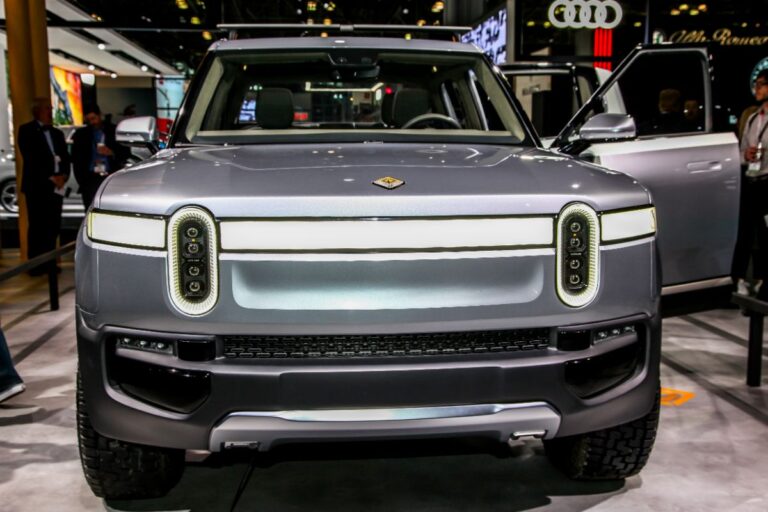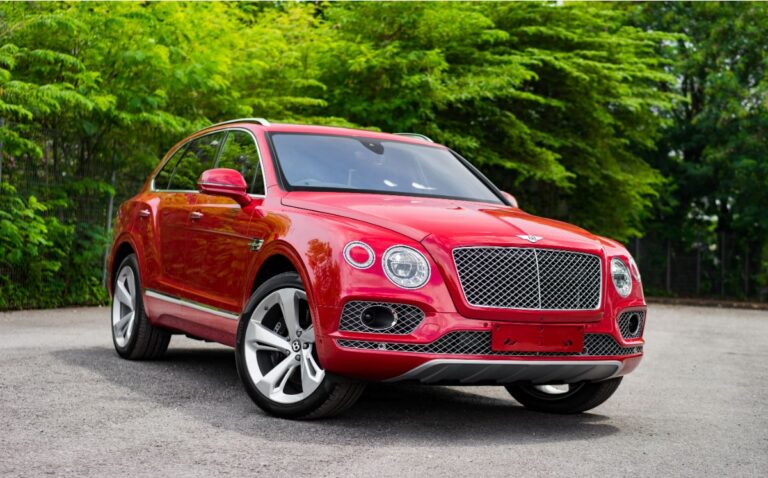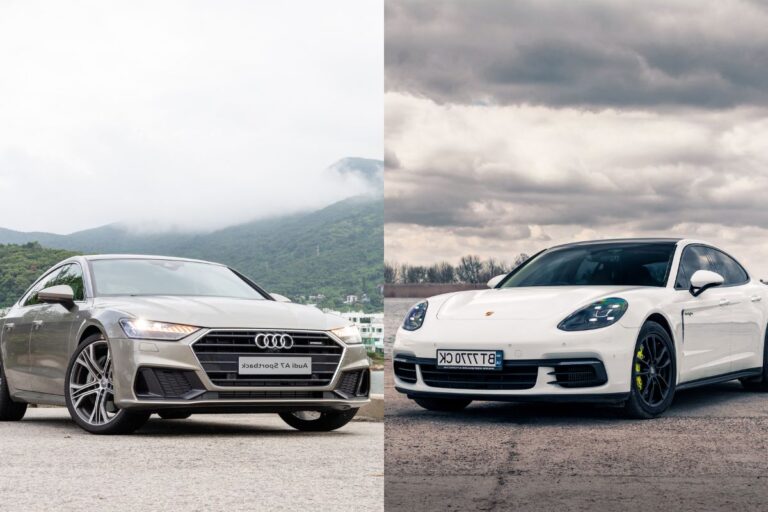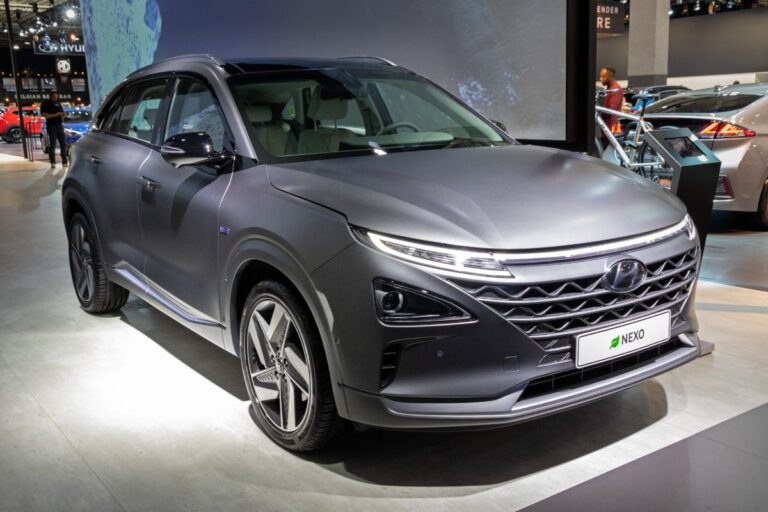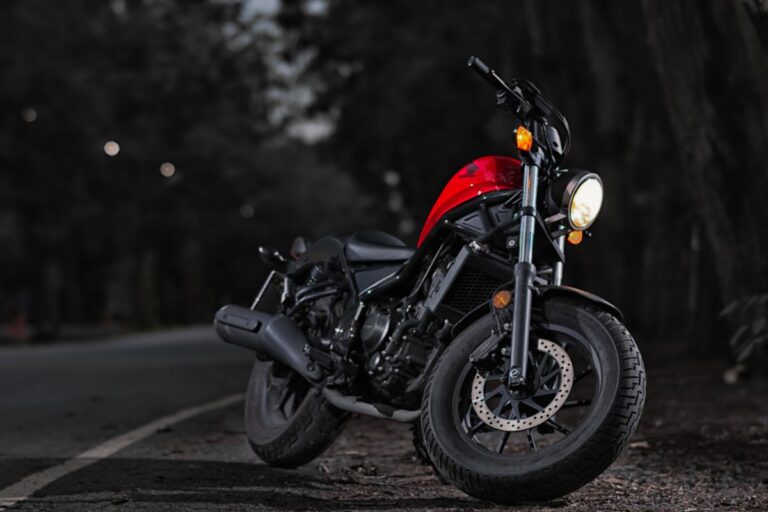
The Toyota Highlander doesn’t need much to introduce it, and the chances are good that if you’ve considered buying a large family SUV, you’ve had one of these on your shortlist before. The Highlander has come a long way, but is it still able to stand up against rivals like the Nissan Pathfinder that has recently been substantially refreshed and comes with more features than ever before?
While the Nissan Pathfinder is more modern inside and out and has a lower base price, it doesn’t offer a hybrid powertrain and is heavier on gas than the Highlander. Both provide similar equipment levels and have achieved similar safety ratings. The choice is ultimately down to brand loyalty.
Various factors determine which SUV is better overall, and when two vehicles are as equally matched as these, a closer look is required to determine the winner.
On The Outside

SUVs need to have a particular look about them – one that speaks of capability and strength. Both the Highlander and the Pathfinder offer this in spades. The Highlander looks slightly understated, and the Pathfinder has been given a substantial refresh that sets it far ahead in the looks department.
Toyota’s SUV comes with LED projector lights and wheels ranging in size from 18 inches to 20, and at the top-end of the range, Highlander models have a power tilt-and-slide moonroof.
For the Pathfinder, a much more contemporary look makes it more noticeable. Still, the available feature spread across the range is similar, with LED exterior lights, wheel sizes, and a panoramic moonroof on the most expensive trims. We much prefer the Pathfinder’s aesthetic, with the Highlander in need of a makeover.
Step Inside
Seating and Upholstery

Space to carry the children, their buddies, and the nanny is required in this segment, and both the Highlander and the Pathfinder do this exceptionally well. You can choose between a seven- or eight-seater configuration in both, with the former switching out the second-row bench for captain’s chairs. Space is ample for the first and second-row occupants, but as is the case in three-row SUVs, the rear-most seats are rather cramped and should be reserved for smaller passengers.
In terms of interior, the Highlander is clearly aging, with lots of hard-touch plastic surfaces. Base models have fabric upholstery, while the upper grades feature a full leather interior. The same is true for the Pathfinder, but the interior is much more modern, and the hard plastics are cleverly hidden from sight.
Cargo Space

The Pathfinder is right on the Highlander’s heels in this department, with 16.6 cubic feet of storage space available behind the third row. Folding the back seats down increases the trunk space to 45 cubes. The Highlander has only 16 cubes behind the back seats, but once those are stowed, it opens up 48.4 cubic feet for you to use.
Total storage space is similar, but the Highlander does come out on top with a smidge more than 84 cubic feet available when the second and third-row are folded down. The Pathfinder has 80.5 cubes available in this scenario.
Features And Infotainment

Despite prioritizing function, Toyota has not skimped on available features. The Highlander has three-zone climate control, a host of USB ports and power outlets for device charging, power-adjustable front seats, and heating and ventilation for the front passengers on the upper trims. Nissan matches this feature set through the range in a very similar way.
In terms of safety features, the Highlander is generously equipped with pre-collision warning, pedestrian detection, road sign detection, full-speed radar cruise control, and a color head-up display on top-end trim. You also get all of these included in the Pathfinder, with the same options available as you move up through the trim levels.
Infotainment in the Highlander is covered by either an eight-inch or a 12.3-inch display, depending on trim, and audio is channeled through a basic six-speaker setup or a premium 11-speaker JBL unit on the top-spec models. Base models in the Pathfinder range have the same eight-inch/six-speaker combo, but a nine-inch screen is available higher up in the lineup. A 13-speaker Bose sound system is up for grabs too.
Under The Hood

Large utility vehicles like these are weighty, with the heftiest Highlander tipping the scales at around 4,600 pounds curb weight. Pathfinders weigh about the same, fully-kitted out, although base models tend to be heavier than the entry-level Highlanders. Powerful engines are thus a hallmark of the class to get these beasts moving.
Engine And Performance
Gone are the days when only gas engines were used in the segment. The Highlander rises to the eco-conscious challenge by offering two powertrain options, including a hybrid setup that makes a combined 243 horsepower. The standard 3.5-liter V6 gas engine is good for 295 hp and 263 lb.-ft of torque.
With either of these powertrains, it will take the Highlander up to 7.3 seconds to get to 60 mpg, and towing capacity ranges from 3,500 lbs. with the hybrid to 5,000 with the gas motor.
Nissan has a 3.5-liter V6 under the Pathfinder’s hood, too, but it makes 284 hp and 259 lb.-ft in this guise. Despite making a little less in the Nissan, it gets to 60 mph in seven seconds and can tow more – up to 6,000 lbs.
Drive Experience

Evenly matched in most ways, both these SUVs offer a large family carrier’s drive and handling experience. There’s somebody lean through turns, especially at speed, but both are pleasant and comfortable to pilot. As is expected of a large utility vehicle like this, you have to be attentive in tight spaces and maneuver cautiously around parking lots.
Still, the host of standard and available driver assists make this less of a chore.
At The Pumps
Frugality isn’t expected in the segment, but with a hybrid option on the menu, the Highlander manages satisfactory gas mileage figures. The EPA rates the hybrid Highlander at 36/35/36 mpg on city/highway/combined cycles, while the gasoline engine variant achieves 21/29/24 mpg in front-wheel-drive – this drops by a point or two when you switch to all-wheel drive.
The Pathfinder offers slightly less impressive figures, with 21/27/23 mpg allocated to the most fuel-efficient 4WD-equipped model. Opting for the top-spec Platinum trim drops these figures to 20/25/22 mpg. In the battle at the pumps, it’s the Highlander that comes out tops.
Safety First

While both the Pathfinder and the Highlander come comprehensively equipped with safety features, it’s the ratings that tell a story too. Toyota’s contender received five stars out of five in crash tests from the NHTSA and a Top Safety Pick + from the IIHS for the 2021 model year.

Nissan’s newest iteration has yet to be scored by the authorities, but if the older models are anything to go by, we can expect the highest ratings, too. Previous model year Pathfinders were awarded Top Safety Pick titles from the IIHS and full marks from the NHTSA.
Pricing Comparison
When competition is as close as this is, one of the best ways to break a tie is to see which one will cost you more. In this case, the Highlander has a starting price of around $35k for the base model with the gas engine but can top out at close to $50k for the plushest model. If you want to go hybrid, you’ll need at least $39k.
The cheapest Pathfinder starts at around $33,5k, and the most expensive option just breaks the $48k mark, without destination fees and options added.
And The Winner Is…
The rivalry between the Toyota Highlander and the Nissan Pathfinder is close, despite the latest Pathfinder being much more modern, better to look at, and offering a higher towing capacity. And, despite its aging aesthetic, the Highlander provides better fuel economy and even the option to go green with a hybrid powertrain.
Still, the Nissan is a little cheaper off the showroom floor. The deciding factor here will most likely come down to brand loyalty – you can’t go wrong with either option.
References:
Car and Driver: 2021 Toyota Highlander
US News: Is the Toyota Highlander a Good SUV?
Nissan USA: Nissan Pathfinder Specs
Car and Driver: Nissan Pathfinder
US News: Nissan Pathfinder

